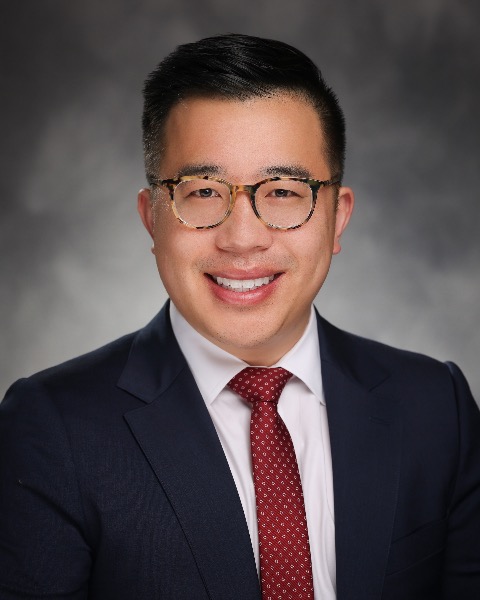Young Neurosurgeon Research Forum
Young Neurosurgeon Research Forum
(YNRF) Cervical Laminoplasty versus Laminectomy and Posterior Spinal Fusion for Cervical Myelopathy: Propensity Matched Analysis of 24-month Outcomes from the Quality Outcomes Database
Friday, April 21, 2023
1:14pm - 1:21pm PST
Location: Los Angeles Convention Center, 406AB

Andrew K. Chan, MD
Assistant Professor of Neurological Surgery (in Orthopaedic Surgery)
Columbia University Medical Center
New York, New York, United States
Presenting Author(s)
Disclosure(s):
Andrew K. Chan, MD: No financial relationships to disclose
Introduction: Compared to posterior spinal instrumented fusion (PCF), cervical laminoplasty (CL) may result in different outcomes for those operated for cervical spondylotic myelopathy (CSM). We compared 2-year (2Y) patient-reported outcomes (PROs) for CL and PCF using the prospective Quality Outcomes Database CSM module.
Methods: Patients undergoing CL and PCF for CSM were included. Cases involving the thoracic spine were excluded. 1:1 propensity matching (nearest neighbor method) was based on age, operated levels, and baseline mJOA and VAS neck pain.
Results: Overall, 1,141 patients were prospectively enrolled with 946 (82.9%) reaching 2Y follow up. 45 CL and 187 PCF met prespecified inclusion criteria. CL was associated with similar blood loss (p>0.05) and length of stay (p>0.05), but a higher rate of routine discharge (88.9 vs 66.7%, p=0.01). CL demonstrated superior mJOA at 3 months (14.0 vs 12.8, p=0.04) but this difference was no longer apparent at 2Y (14.3 vs 14.0, p=0.61). CL had a higher rate of 2Y return to baseline activities (85.7 vs 54.5%, p=0.04). There were no differences for 2Y NASS satisfaction, VAS neck pain, VAS arm pain, NDI, EQ VAS, and EQ-5D (p>0.05). Compared to baseline, both procedures were associated with significant mean improvements in all 2Y PROs (p < 0.05). There were no differences in 30-day readmission (CL: 0 vs PCF:2.2%, p>0.99) and 2Y cumulative reoperation (CL: 6.7 vs PCF: 2.2%, p=0.31). 2Y return to work (RTW) rates were similar (CL: 45.0 vs PCF:54.5%, p=0.61).
Conclusion : Compared to PCF for CSM, CL was associated with a higher rate of discharge to home. mJOA improved more rapidly for CL, but initial 3-month superiority was no longer evident at 2 years. CL patients more often returned to baseline activities at 2 years. Quality of life, RTW, and satisfaction were similar for both groups.
Methods: Patients undergoing CL and PCF for CSM were included. Cases involving the thoracic spine were excluded. 1:1 propensity matching (nearest neighbor method) was based on age, operated levels, and baseline mJOA and VAS neck pain.
Results: Overall, 1,141 patients were prospectively enrolled with 946 (82.9%) reaching 2Y follow up. 45 CL and 187 PCF met prespecified inclusion criteria. CL was associated with similar blood loss (p>0.05) and length of stay (p>0.05), but a higher rate of routine discharge (88.9 vs 66.7%, p=0.01). CL demonstrated superior mJOA at 3 months (14.0 vs 12.8, p=0.04) but this difference was no longer apparent at 2Y (14.3 vs 14.0, p=0.61). CL had a higher rate of 2Y return to baseline activities (85.7 vs 54.5%, p=0.04). There were no differences for 2Y NASS satisfaction, VAS neck pain, VAS arm pain, NDI, EQ VAS, and EQ-5D (p>0.05). Compared to baseline, both procedures were associated with significant mean improvements in all 2Y PROs (p < 0.05). There were no differences in 30-day readmission (CL: 0 vs PCF:2.2%, p>0.99) and 2Y cumulative reoperation (CL: 6.7 vs PCF: 2.2%, p=0.31). 2Y return to work (RTW) rates were similar (CL: 45.0 vs PCF:54.5%, p=0.61).
Conclusion : Compared to PCF for CSM, CL was associated with a higher rate of discharge to home. mJOA improved more rapidly for CL, but initial 3-month superiority was no longer evident at 2 years. CL patients more often returned to baseline activities at 2 years. Quality of life, RTW, and satisfaction were similar for both groups.
